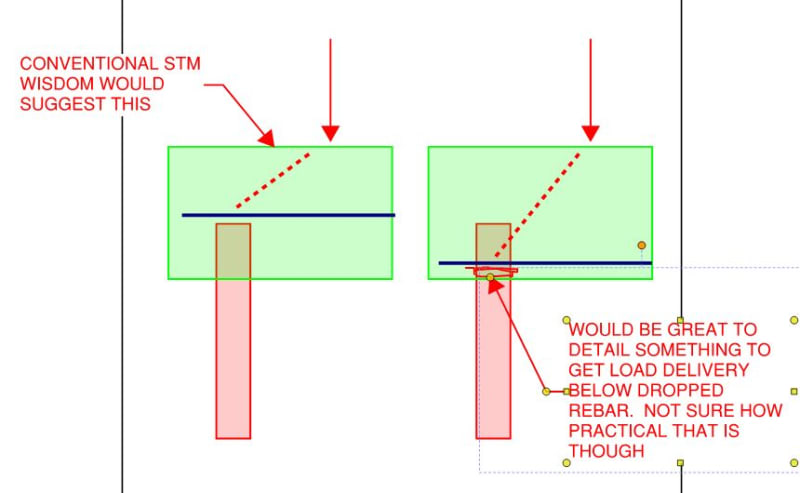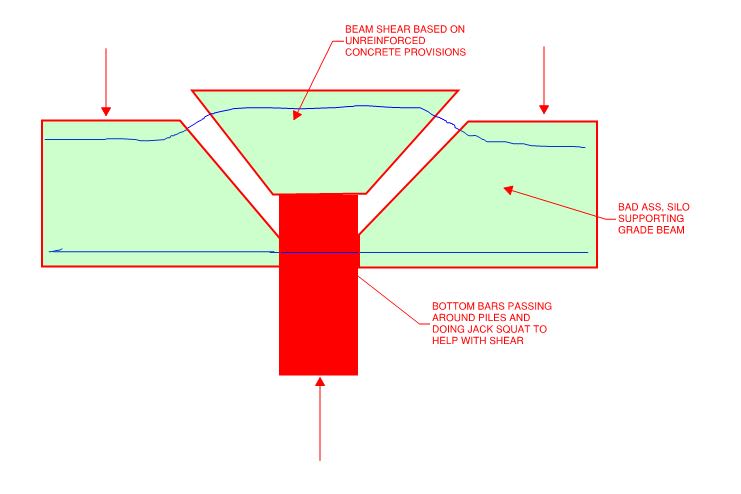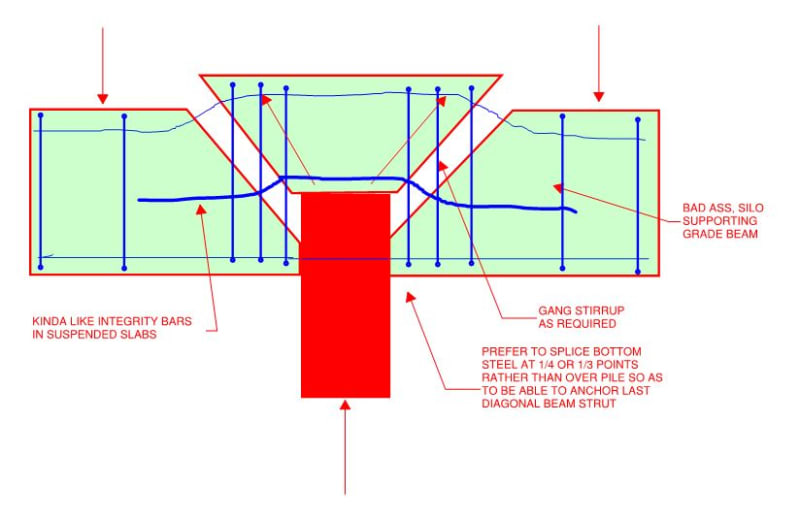ChiefIlliniwek1
Structural
- Aug 13, 2013
- 6
I am designing multiple pile caps supporting round storage silos to bear on top of steel H-piles. Due to the lateral loads, I would like to consider my piles as fixed at the top for the connection to the pile cap. I've followed a Colorado DOT standard for the embedment of my H-pile into the pile cap, 20" for a HP12x53. I also have some high capacity piles currently sized at HP16x121, but the size of those is likely to decrease. I haven't yet calculated the embedment for those, but I need to keep those in mind also.
My question is, where do I locate my bottom mat of reinforcing? I cannot for the life of me find any guidelines for this situation. CRSI locates the bottom mat of the cap a few inches above the top of the pile. For my 54" thick mat, that puts my bottom mat over 24" from the bottom of my cap. If the piles are directly under the silo ring, do I need to consider a strut and tie model? I can see how this might get problematic considering the piles are in a circular pattern and potentially with the height of the theoretical model cut down due to the bottom "tension" chord being at such a shallow height.
If I put the bottom mat near the bottom of the cap similar to a standard footing, I would have to have continuous large bars at large spacings to clear the piles. Can I decrease the spacing of my bottom bars and terminate them at the piles? They're not required to develop the full strength of the bars directly at the pile locations.
All help is appreciated!
My question is, where do I locate my bottom mat of reinforcing? I cannot for the life of me find any guidelines for this situation. CRSI locates the bottom mat of the cap a few inches above the top of the pile. For my 54" thick mat, that puts my bottom mat over 24" from the bottom of my cap. If the piles are directly under the silo ring, do I need to consider a strut and tie model? I can see how this might get problematic considering the piles are in a circular pattern and potentially with the height of the theoretical model cut down due to the bottom "tension" chord being at such a shallow height.
If I put the bottom mat near the bottom of the cap similar to a standard footing, I would have to have continuous large bars at large spacings to clear the piles. Can I decrease the spacing of my bottom bars and terminate them at the piles? They're not required to develop the full strength of the bars directly at the pile locations.
All help is appreciated!

![[idea] [idea] [idea]](/data/assets/smilies/idea.gif)


